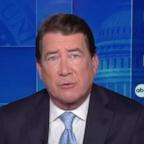Polls closing at 7 p.m.
It's now 7 p.m. Eastern, which means polls in our first bunch of states have now fully closed! That means we may get our first projections of the evening shortly. Keep an eye out as results roll in from Indiana and Kentucky (where many polls closed at 6 p.m. Eastern), along with all of Georgia, South Carolina, Vermont and Virginia. Here are our forecasts for the races in all of those states:
Many polling places are also closing in Florida and New Hampshire. Stay tuned for our forecasts in those states when they've fully closed in an hour.







